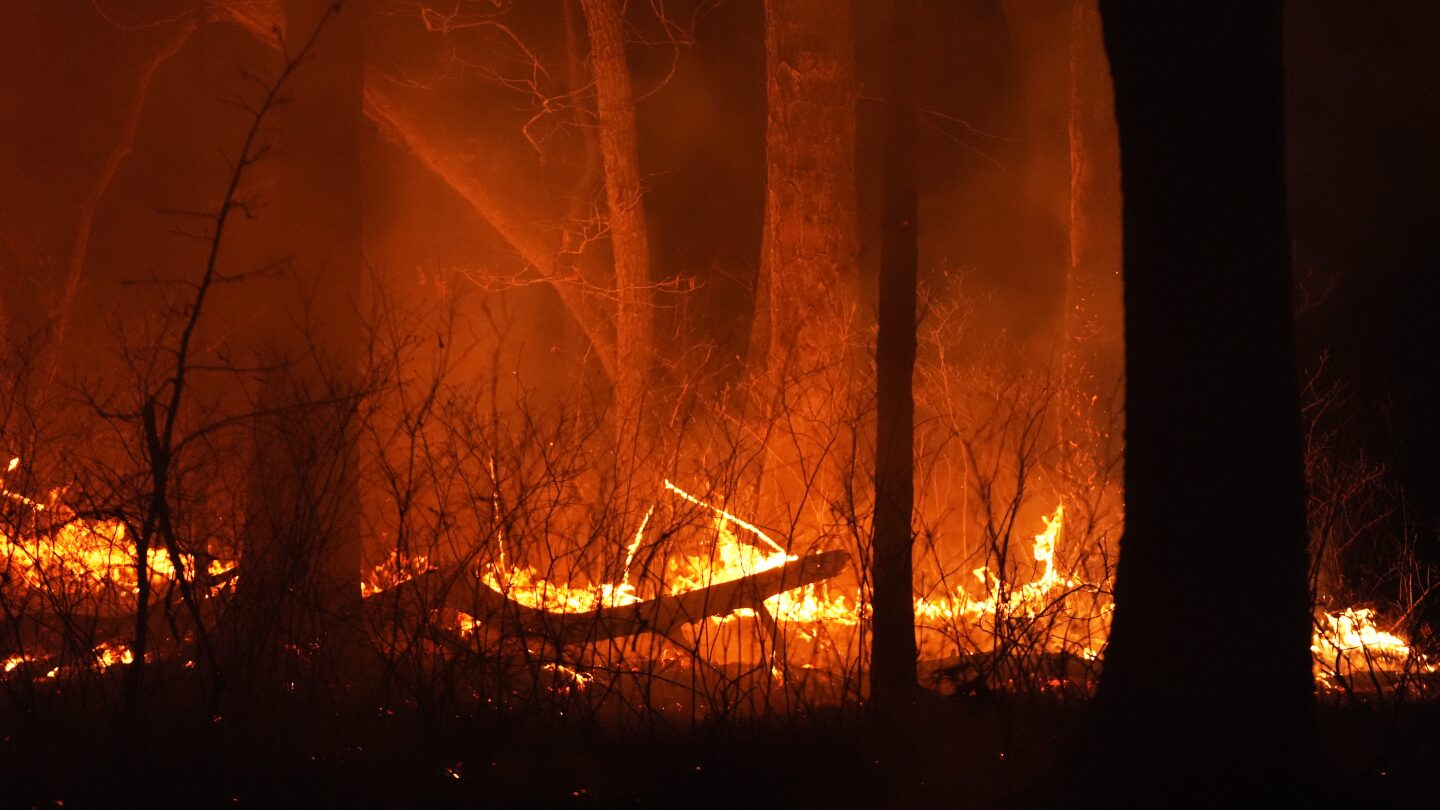New Jersey Wildfire Triggers Mass Evacuations and Highway Shutdown
A fast-moving wildfire in southern New Jersey has forced thousands of residents to evacuate their homes and prompted the temporary closure of a major highway. The blaze, which ignited on Tuesday afternoon in Wharton State Forest, rapidly spread across 3,000 acres due to dry conditions and strong winds. Emergency crews are battling the flames while officials urge displaced families to seek shelter in designated safe zones.
Emergency Response and Evacuation Efforts
Local authorities issued mandatory evacuation orders for residents in Burlington and Ocean counties as the fire encroached on residential areas. Over 5,000 people have been displaced, with shelters set up in nearby community centers and schools. The New Jersey Forest Fire Service deployed helicopters and ground teams to contain the flames, while the state police assisted with road closures and traffic diversions.
“This is one of the most challenging fires we’ve faced in recent years,” said Greg McLaughlin, Chief of the New Jersey Forest Fire Service. “The combination of low humidity, high temperatures, and wind gusts up to 20 mph created perfect conditions for rapid spread.”
Key developments include:
- Highway Shutdown: A 10-mile stretch of the Garden State Parkway was closed between exits 48 and 52, causing significant delays for commuters.
- Air Quality Concerns: Smoke plumes have drifted into neighboring towns, prompting health advisories for vulnerable populations.
- Federal Assistance: New Jersey Governor Phil Murphy requested additional resources from the Federal Emergency Management Agency (FEMA).
Causes and Environmental Impact
While the exact cause of the fire remains under investigation, experts point to a mix of human activity and climate-related factors. New Jersey has experienced an unusually dry spring, with rainfall levels 30% below average, according to the National Weather Service. This drought-like scenario left forests highly susceptible to ignition.
Dr. Rebecca Smith, a wildfire ecologist at Rutgers University, noted, “Wildfires in the Northeast are becoming more intense due to longer dry spells and higher temperatures. What used to be a rare occurrence is now a recurring threat.”
The fire has already caused significant ecological damage, including:
- Destruction of critical habitats for endangered species like the barred owl.
- Loss of an estimated 1,500 acres of pine barrens, a unique ecosystem native to the region.
- Potential long-term soil erosion risks due to the loss of vegetation.
Community Reactions and Challenges
Evacuees described chaotic scenes as they fled their homes with limited notice. “We grabbed our pets and important documents, but there was no time for anything else,” said Maria Hernandez, a resident of Bass River Township. “The smoke was so thick you could barely see the road.”
Meanwhile, business owners near the affected areas reported economic losses due to road closures and reduced tourism. “Summer is our busiest season, but now we’re seeing cancellations every hour,” said Tom Reynolds, owner of a campground in Tabernacle.
Future Outlook and Preventative Measures
Officials warn that wildfire risks will persist throughout the summer without substantial rainfall. The state has implemented stricter burn bans and increased patrols in high-risk zones. Residents are encouraged to:
- Create defensible space around properties by clearing dry brush.
- Sign up for emergency alerts through the NJ Office of Emergency Management.
- Avoid outdoor activities that could spark fires, such as campfires or fireworks.
As containment efforts continue, the incident underscores the growing wildfire threat in historically unaffected regions. “Climate change is rewriting the rules,” Chief McLaughlin emphasized. “We need to adapt our strategies to protect lives and landscapes.”
For real-time updates on evacuation zones and relief efforts, visit the New Jersey Office of Emergency Management website.
See more CNN Headline


